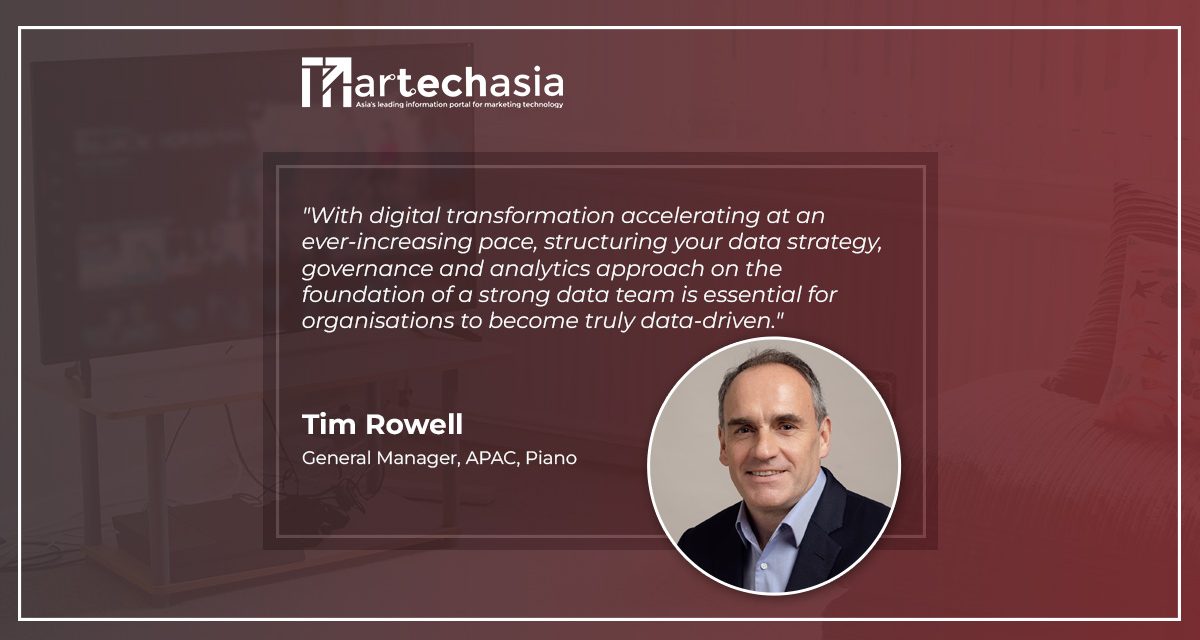If you’re ready to transform into a data-driven organisation, here are some practical tips to help you structure your data department.
According to a study carried out by YouGov for Tableau, “63% of data-driven business leaders are optimistic about the future of their company” and 80% say that the use of data was a key differentiator during the pandemic. With the help of data, these companies are better equipped to predict or anticipate potential problems and react quickly, making them more agile and able to plan for the longer-term development of their business.
If you’re ready to transform into a data-driven organisation, here are some practical tips to help you structure your data department.
The three pillars of the data-driven model
Digital players today are increasingly convinced of the usefulness and added value of data to improve business performance. However, in a study carried out by Forrester Consulting for Dell Technologies, it is reported that two-thirds of businesses see themselves as data-driven, yet only 21% actually prioritise the use of that information. The study’s findings point to three major obstacles to this paradox: a lack of in-house data science skills, siloed activities and data and manual processes that are too slow to respond to immediate business needs.
There are three fundamental pillars for successful data-driven businesses that align to these findings:
- Data strategy is a clear roadmap of how data can be used to achieve business objectives, whether to increase revenue, reduce expenses, improve user experience or increase customer satisfaction.
- Data governance refers to the processes, standards, roles and organisation that together guarantee the quality and availability of data.
- Data analytics refers to the skills and know-how of the people who produce, manage and interpret data on a daily basis.
With that framework in mind, let’s look at some basic rules for developing a data centre in your organisation.
Five key ways to organise your business around data
There are a wide range of factors to consider when organising the set up of your business around data. Here are five points to consider to make your data project a success.
- Obtain buy-in from leadership teams
As with any major business transformation, becoming a data-driven organisation must be supported by senior management. They need to have a clear understanding that the project is of key importance across all departments, from HR to product development and from sales to marketing.
Senior management must see the value of creating a data team: time savings, additional revenues generated directly or indirectly, streamlining of processes, better coordination of all teams, optimisation of the UX and messages on all channels, and more.
Upon approval from senior management, team managers then must identify use cases and potential returns on investment within their department to guide the ultimate structure of the data team. - Recruit a cross-disciplinary team with complementary skills
Once senior management is on board, your organisation will need to consider how to staff for the transformation. Before diving headlong into recruiting, start by assessing your budget to determine your current headcount and what you can cater for when expanding the data teams. You then need to define your hiring priority for bringing in new talent.
You may identify the priorities for data hires by assessing your organisation’s data maturity, which is generally measured by three criteria: understanding the past, knowing the present and predicting the future. Data analysts focus more on understanding your past data to analyse the levers for growth. Business analysts are more connected to the present through the use of dashboards. Data scientists tend to predict future results.
If your organisation has a higher headcount or wants to scale quickly, the first hires for your data team should be a data engineer and a data analyst. With these two roles, you can set up a technical infrastructure and start the initial groundwork for analysis. Over time, you can build a strong multidisciplinary team by adding five key roles: data engineer, data scientist, data analyst, business analyst and machine learning engineer.
Don’t forget to assess existing talent in your organisation to see if your current skill sets or employee interest could be a match for your needs. This way you will spend less time onboarding and more time developing your employees and making an impact. - Give the data team a central place in the organisation
Data was historically considered a responsibility of corporate IT departments. As it became clearer that all business units should play a role in data accountability, organisational systems evolved. Currently, there are three main models of data teams, each with their own strengths and weaknesses.
• The centralised model. With the data team at the centre, they can be more agile and increase their technical skills more quickly. However, it’s important that they remain in close communication and training with other departments to stay on top of changing business priorities and the way they collect and analyse information.
• The decentralised model. By dividing data expertise by subsidiary, department or product, the data is often more readily available and tailored to the needs of each business unit. But it’s important not to compromise on technical analytics standards and workflows with different governance tools operating at once.
• Hybrid architecture. Sharing data governance across all teams in the organisation has the advantage of keeping a centralised data team in charge of configuring the tools and maintaining quality standards. However, it means hiring specific skill sets that can work in multiple environments, like both data analysis and marketing. - Optimise data collection strategies
Once you’ve recruited your team and set up your organisational model, you need to look at the governance tools as well. Indeed, the effectiveness of your analyses largely depends on the technologies you use on a daily basis to collect, store and structure your data. If your data is of poor quality at the input stage—due to data entry errors, poor tagging, scattering of data across various internal tools or other issues—your analyses and interpretations are bound to be flawed or biased at the output stage.
Depending on your industry and your needs (e.g., raw or structured data), you should create a data lake or data warehouse to centralise all data from multiple sources in one place. Once stored, it can then be cleaned and modelled before being processed. - Create a culture around data
As mentioned previously, the success of a data-driven organisation is dependent on buy-in where all employees are invested in the outcome. It is therefore essential to instil a true “data culture” at the heart of the company. And this cannot be simply imposed: the data department must provide support, raise awareness and constantly train all employees in the use of data in order to promote its democratisation. To do this, it must ensure that the challenges of data are properly understood and that the data is accessible through an easy-to-understand format, like personalised dashboards. Before kicking off a massive data-driven project, we recommend starting with one or two small data projects to pressure-test the organisation’s commitment to a data culture and identify any roadblocks that might jeopardise bigger initiatives in the future.
A strong foundation for a data-driven organisation
With digital transformation accelerating at an ever-increasing pace, structuring your data strategy, governance and analytics approach on the foundation of a strong data team is essential for organisations to become truly data-driven. This will not only help your business become more agile in anticipating and reacting to potential problems, but also in effectively planning for the long-term goals.


















